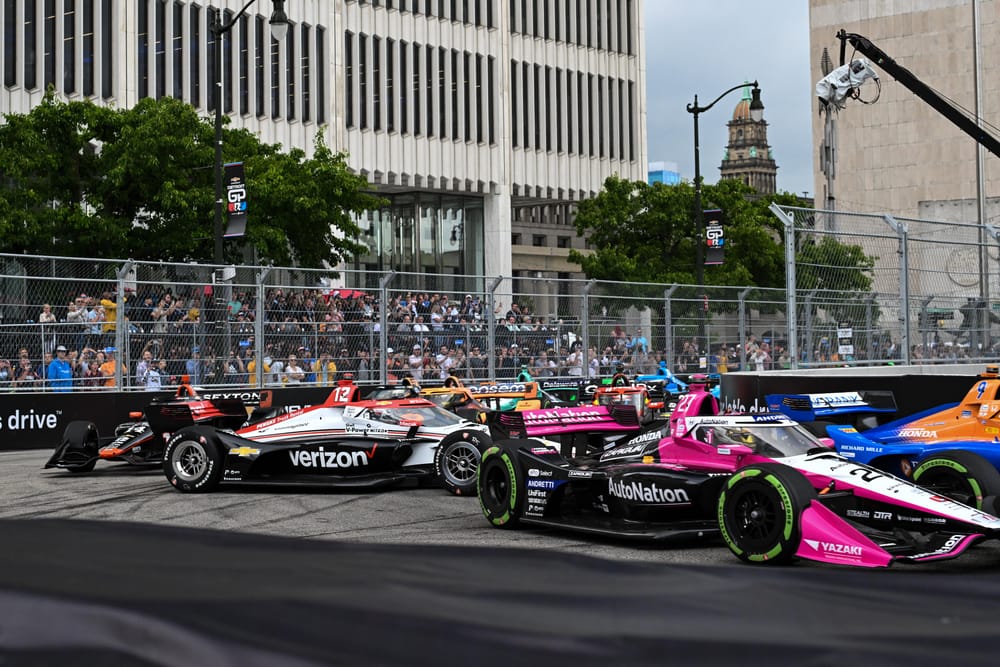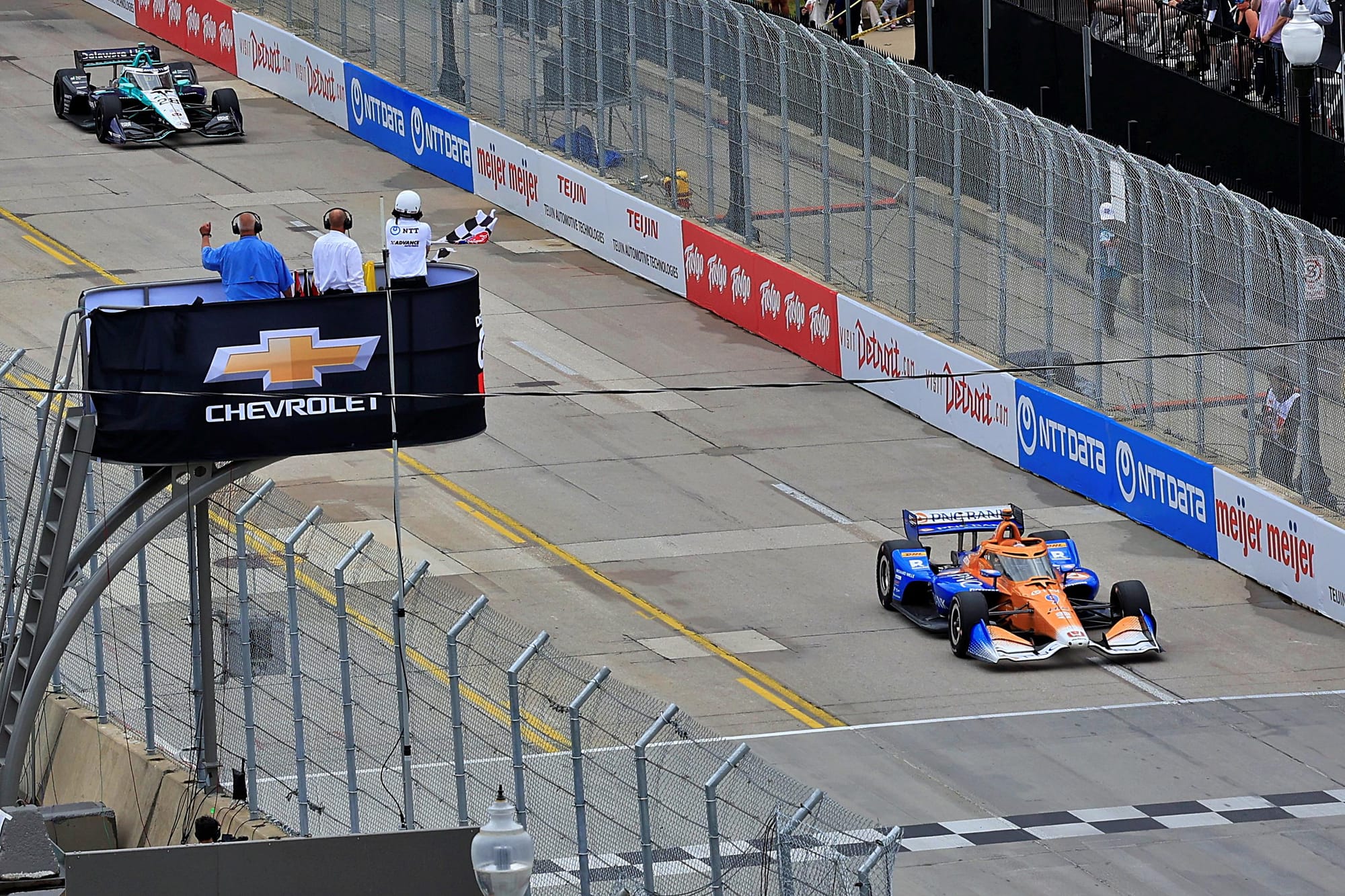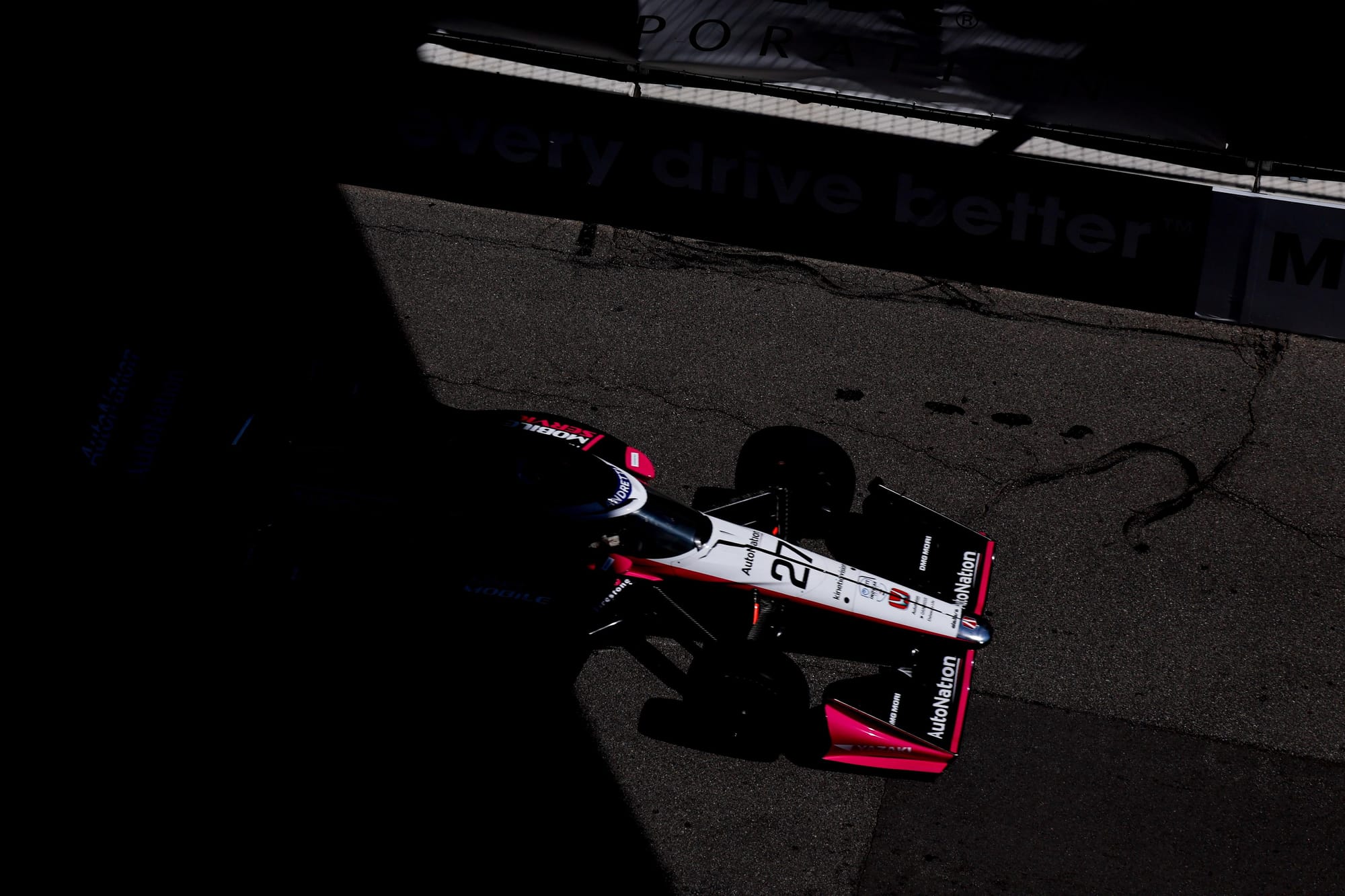To see Oriol Servia - who last raced in 2019 - lead the most laps in the Detroit IndyCar street race was hardly a surprise, especially given the unpredictable nature of the race.
Of course, Servia is the IndyCar pace car driver, and his Corvette needed refuelling such was the hive of activity, as caution laps made up 47 of the 100 laps of the race.
Funny. Not based in true facts, at least not all of them. Yes, a bit messier than desired but still a great and entertaining race. Ratings will tell if the audience wants to see me lead more laps again 😅😉🏁 @IndyCar https://t.co/Dk8BcryeKY
— Oriol Servia (@OriolServia) June 2, 2024
It was a race featuring eight crashes - well, there were more, those were just the ones that caused a caution - rain, strategic gambles on fuel and tyres, and drivers like Will Power receiving four penalties and still ending up sixth. It just beggars belief.
It left fans with a mix of opinions, ranging from celebrating the unpredictability to demanding for a return to the old Belle Island circuit - a view shared by some drivers too. But this isn’t the first time we’ve had races like this in IndyCar recently.
Belle Isle appreciation post 🙏🏼 pic.twitter.com/MiVesujojQ
— Ryan Hunter-Reay (@RyanHunterReay) June 2, 2024
Why was this race so messy? How does IndyCar’s stewarding play into what we saw? Is this type of race good for IndyCar? Let’s take a look at the event as a whole to try to draw some conclusions.
What the drivers made of it
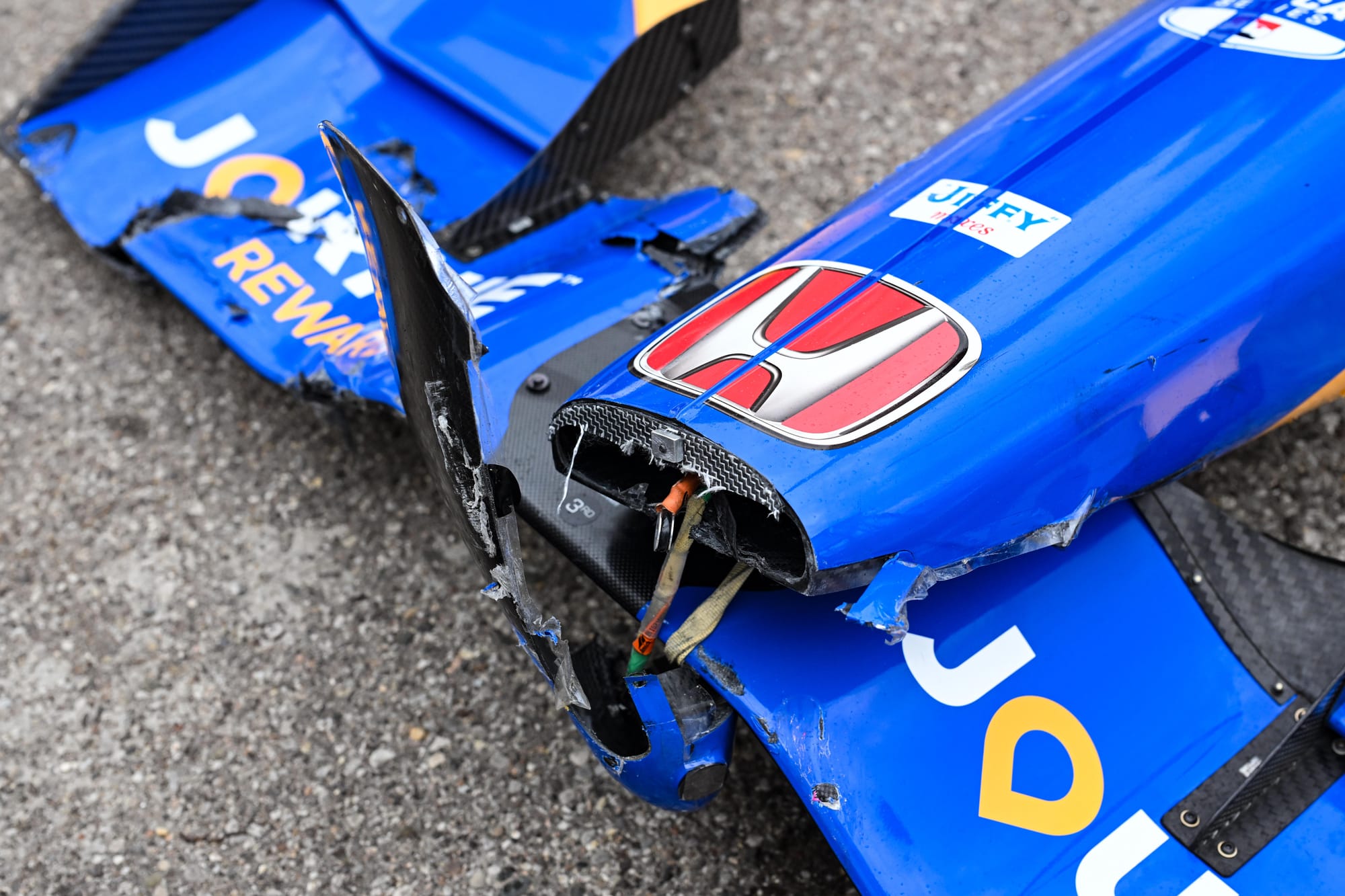
There was some immediate reaction from drivers who had admittedly not watched the race back at that point, so they saw things through their own blinkered views.
Marcus Ericsson made a late charge to second (showing why Andretti wanted to sign him, as he was some way off his team-mates in qualifying but beat both in the race) and has won similar races before, including in Nashville in 2021 when he came from last and literally launching over the back of another car to victory.
“I think people are driving reckless on the restarts,” he said.
“Obviously [there are] opportunities on restarts.
“I think more than 50% [of the race was spent] on yellow [47/100 laps in reality].
“I’m sure it was dramatic and fun to watch. At some point also we need to have a bit of a better standard. We're one of the best racing series in the world. We shouldn't be driving on top of each other every single restart.
"I saw in my mirrors every time on the restart, four, five-wide. I was just praying not to get hit pretty much every restart.
“I need to watch it before I comment more on that.”
Me too. https://t.co/JukWuIqGeF
— Graham Rahal (@GrahamRahal) June 2, 2024
As previously mentioned a host of drivers and fans were left yearning for a return to Belle Isle, the venue before the current city track was introduced last year.
This new layout is just fundamentally too short for IndyCar. In practice and qualifying, you have drivers backing up halfway through the lap to try to get a clean run through the next lap, but the 1.645-mile track just can’t support that.
People are easily out of place in qualifying.
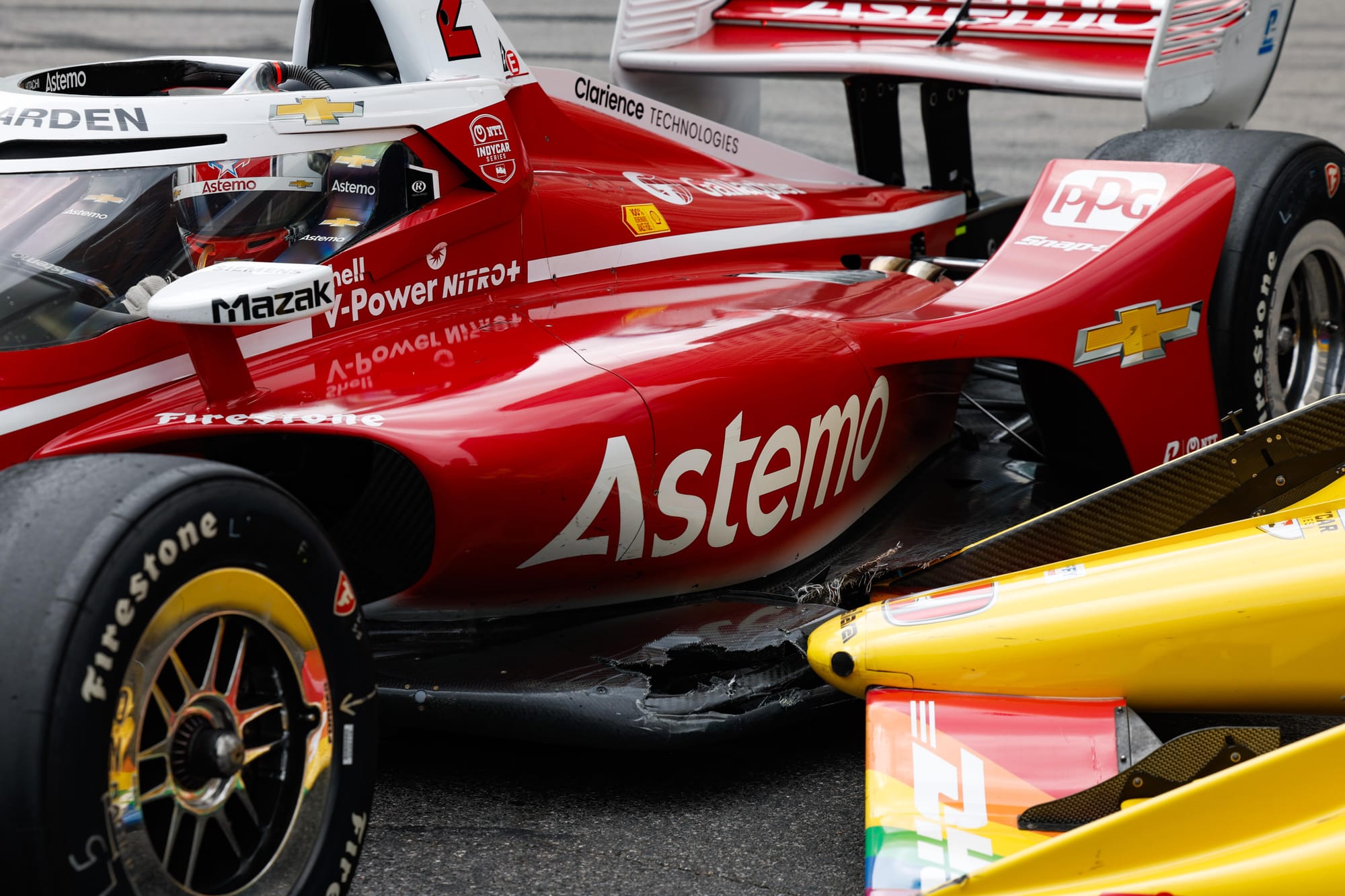
And then with just nine corners in the race, it breeds desperation in the few passing zones that are afforded, the Turn 3 hairpin being the only obvious and 'safe' passing point. Turn 8 is relatively popular but very easy to get wrong and put the car you’re passing in the wall after a downhill braking zone into the left-hander.
“The track, I don't know what word to use, but it’s…challenging, let's put it that way,” added Ericsson. “It has some great characteristics with the bumps, the walls are close. That is good.
“But it is very short and twisty for IndyCar. That's for sure. It's on the limit of what we can do.
“I wish we could have a couple more corners and a little bit longer lap. It seems to create good drama, like we saw last year and this year.”
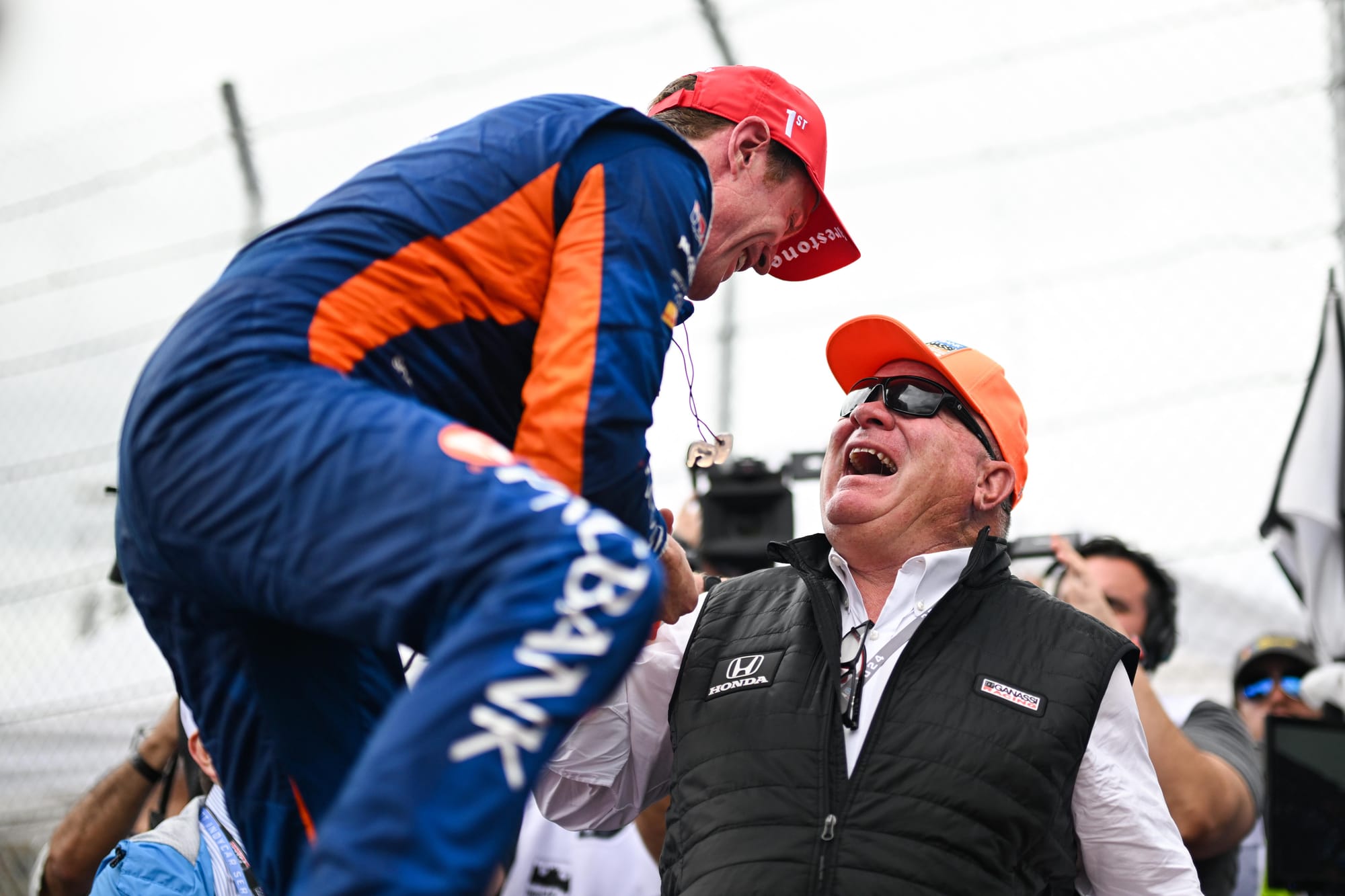
Scott Dixon offered a slightly alternative opinion to his ex-Ganassi team-mate Ericsson, whom he'd beaten to the win.
That victory was underpinned by pitting earlier than it should have been possible to reach the end on fuel, but he gambled correctly that there would be more cautions that would allow him to save.
Asked where the line was between the race being action-packed versus embarrassing, Dixon replied: “I don't think it's ever embarrassing.
“I think you do a survey, most people go to races to watch crashes. I don't.
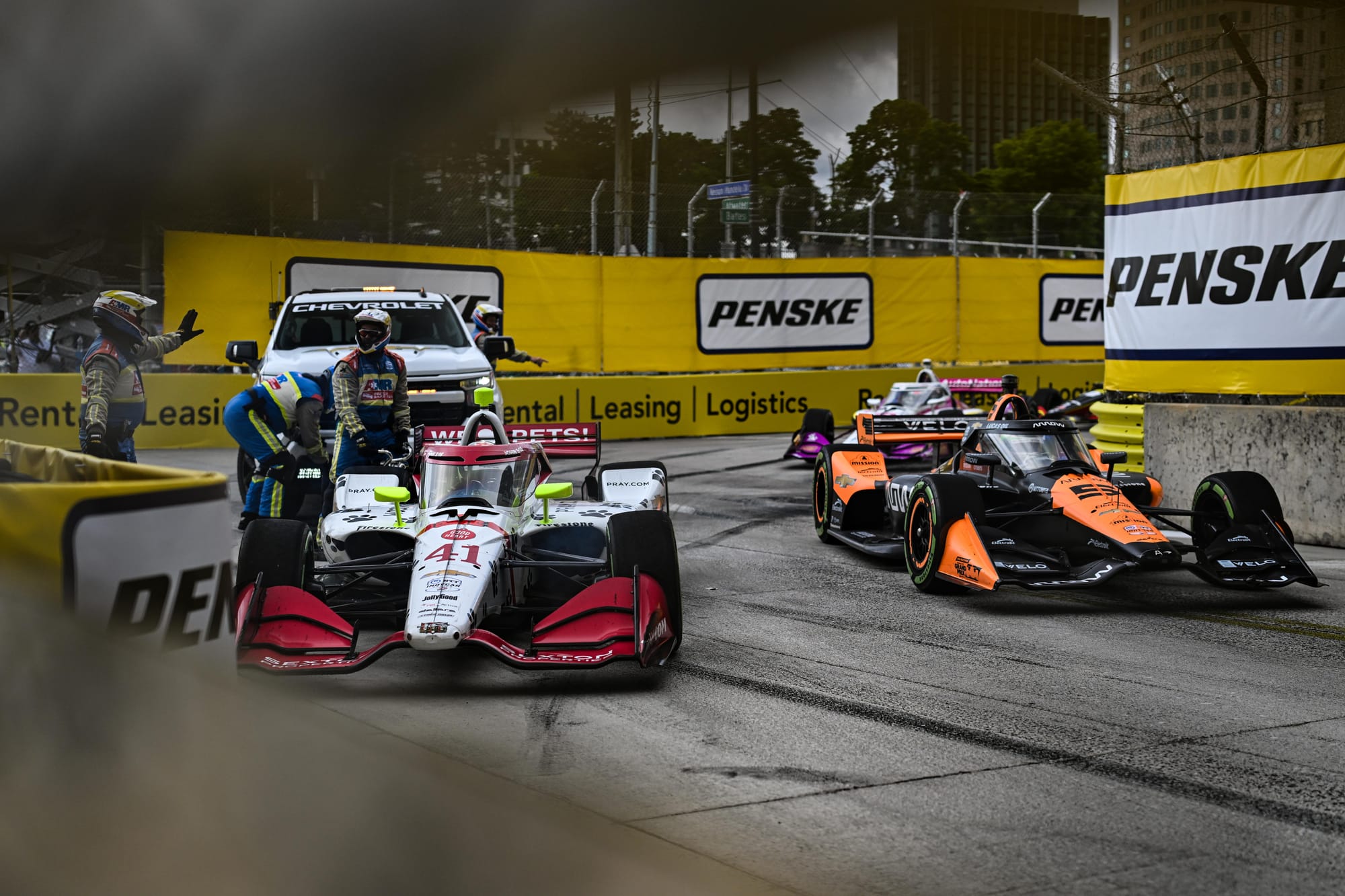
“I know when I watch some kind of NASCAR race, they have a similar kind of effect. It's obviously exciting. Obviously you don't want to see the caution laps and them taking over.
“I didn't see a lot of it. Obviously once I watch the race back and see what happened. But you're in confined streets here. It's tough, man. You make any kind of mistake...
“The tyre was pretty hard here. Very hard to turn the black [harder compound] tires on, makes it easy to lock the fronts. Colder conditions than last year. That probably definitely played a factor, as well.”
Last year there were still 32 laps run under caution, which makes a grand total of 79 laps of the 200 run on this track under caution.
Given part of the logic of having a race the weekend after the Indianapolis 500 - much to the detriment of the exhausted teams and drivers - is to capitalise on any carryover TV ratings, it begs the question: is this the kind of race you want to have as a follow-up?
Especially when the Indy 500 is more important than the championship to some - so if they had a bad Indy 500, they can come into Detroit pissed off and feeling like there's nothing to lose by just going all out without thought of the consequences.
The Indy 500 is a perfect demonstration of the skill and bravery of the drivers, the work of the crews both in preparing the cars and in the pitstops, the strategists, and trusting the competitors around you. You could be forgiven for thinking Detroit was an alien sport in comparison.
As Ericsson points out, this is supposed to be a demonstration of what people regularly refer to as one of the best single-seater racing championships in the world. You could certainly be forgiven for baulking at that observation if you were watching Detroit.
Stewarding claims assessed
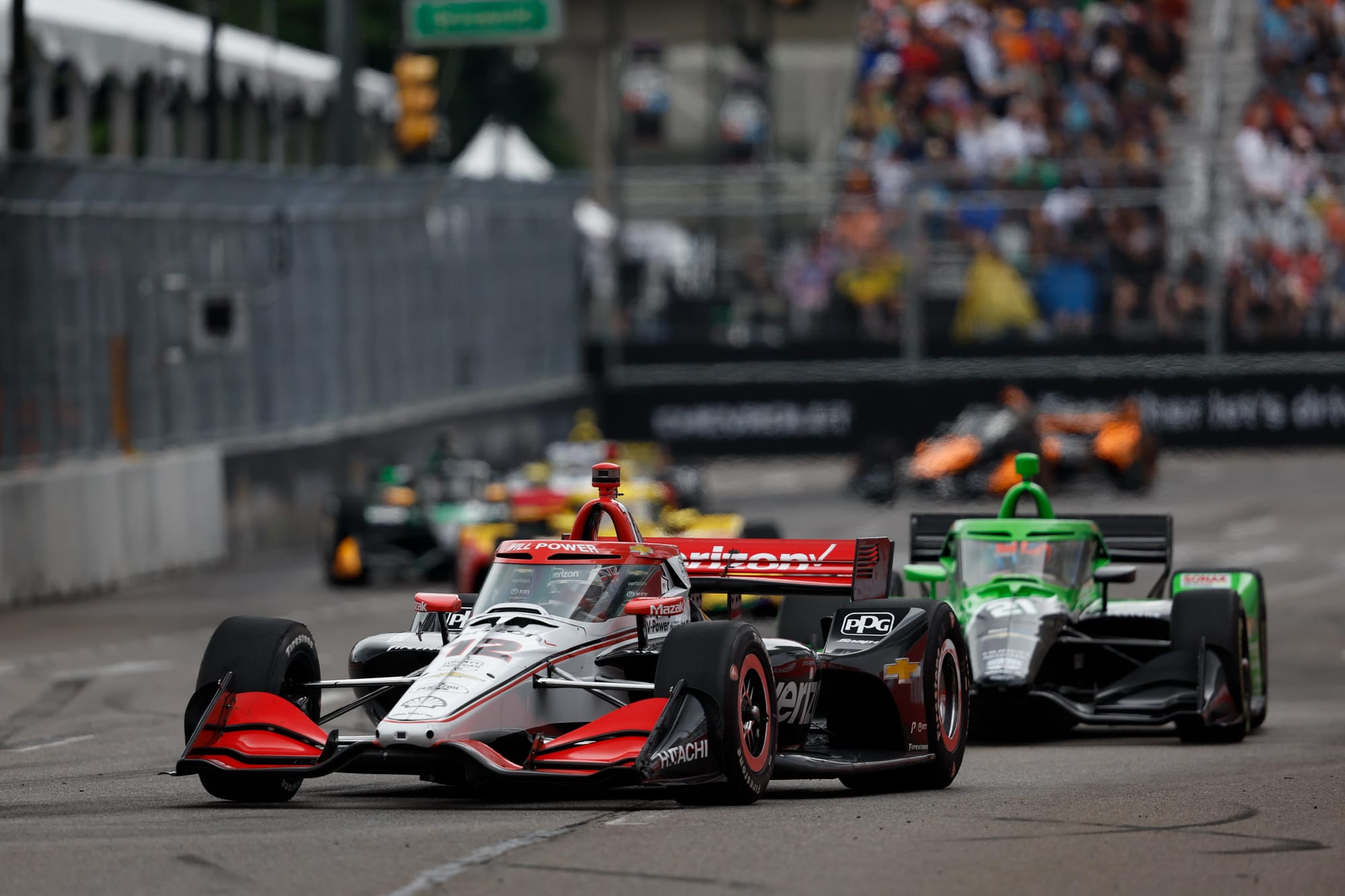
I actually think the stewards got most of the decisions in this race correct.
There is only one major one I would argue against and that was the Rinus VeeKay-Will Power incident, where Power did make contact with VeeKay - but that felt like a racing incident where VeeKay was on the outside and cut across the front of Power. VeeKay could argue he was just going about his business and was hit but, on the outside, he had a responsibility there to leave Power enough room, especially as they were three-wide with Romain Grosjean in a sandwich.
But honestly, that was a tough call.
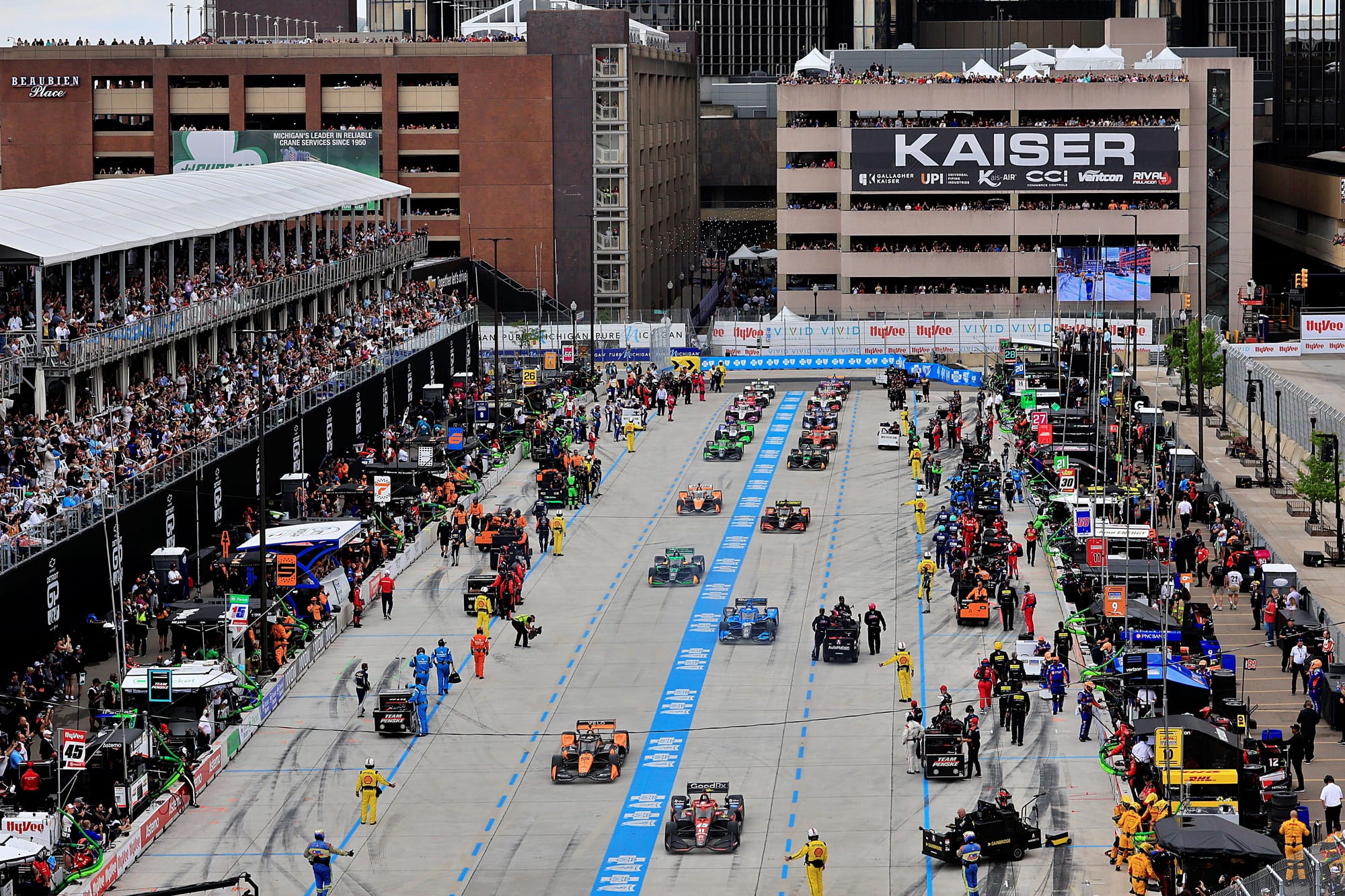
The much, much greater problem for IndyCar with the penalties in races like this is that, whereas on a standard road and street circuit a drivethrough that drops you to the back of the pack or costs a handful of positions would be fatal for your chances of a good result, here it didn’t matter at all!
Let’s use Josef Newgarden as an example. He made his last pitstop with Dixon, so matched the winner’s strategy, but he ran over a wheelgun in his stop which warranted a drivethrough.
But because he’d just pitted, he served his drivethrough, then there were another few cautions, the drivers ahead pitted and Newgarden could stay out, so he vaulted from the back to fifth, with his penalty totally negated.
Wild day… finished P16. 🥲
— Alex Palou Montalbo (@AlexPalou) June 2, 2024
Craziest race I’ve been part of. Anyway my team did an excellent job all weekend, can’t wait for a proper race next weekend. 😅
Top job @scottdixon9 & @MarcusArmstrng 🏆 pic.twitter.com/jCqbiI6Vwb
Like in Nashville, the short pitlane here means drivethrough penalties aren’t as costly, so you’ve got drivers yo-yoing all over the place. Like Alex Palou, who pitted twice in the early running and was 21st, pitted again for wets, pitted again for dry tyres mere laps later, and was behind Newgarden in sixth when they crashed.
You can’t mandate the length of the pitlane being longer for that reason, it’s just happenstance, but it did contribute to the issue of the race being messy and tough to understand.
This is going to be one of those races where someone finishes 9th and you’re like how in the WORLD did they get there? #DetroitGP
— Conor Daly (@ConorDaly22) June 2, 2024
The IMSA SportsCar Championship race later on Sunday was a perfect example, where Nick Tandy was able to serve a drivethrough and emerge in fourth, then pitted just as a caution came out and emerged at the front of the field. That wouldn’t be possible at a lot of other tracks, especially in IMSA with driver changes.
There’s also the need for IndyCar drivers to take responsibility for avoiding some of this chaos.
Don’t get me wrong, some of the restarts were a lottery, and plenty of drivers avoided any issue. But as we’ve seen in countless incidents recently, some drivers need to be more heads-up about being overtaken and just getting out of the way.
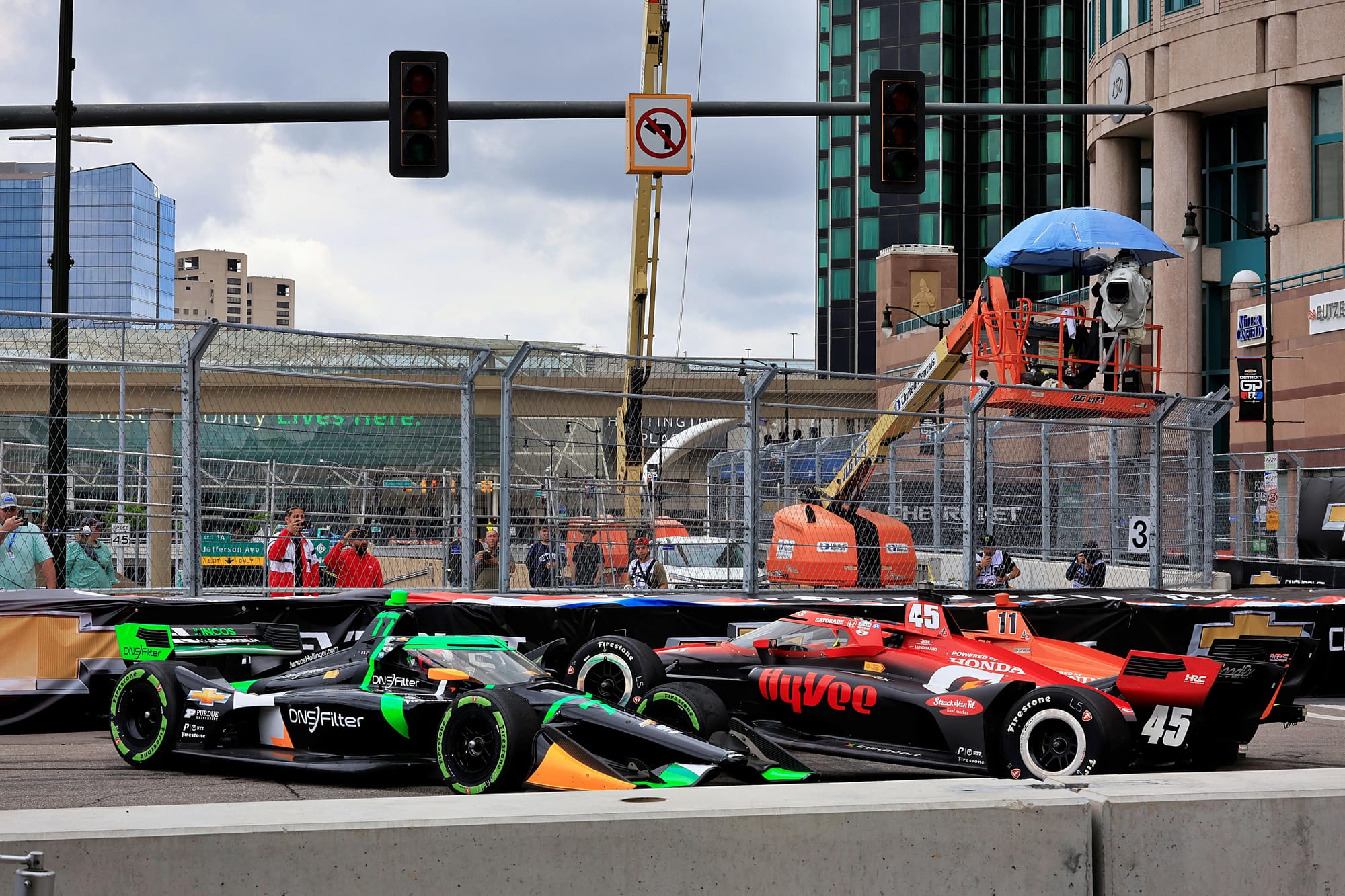
I imagine it’s annoying to be divebombed at Turn 3 at Detroit, but just get out of the way and live to fight another lap, especially with so many cautions going on.
It feels like there’s a habit of drivers either not reacting quickly enough to overtakes or just steadfastly refusing to move and instead taking the contact. My zoomed out perspective of that is I’d rather give up one position in an overtake than 20 by retiring.
Ericsson’s right when he says drivers have to do better when racing wheel-to-wheel in the series. Just because the car is robust, doesn’t mean it’s a weapon.
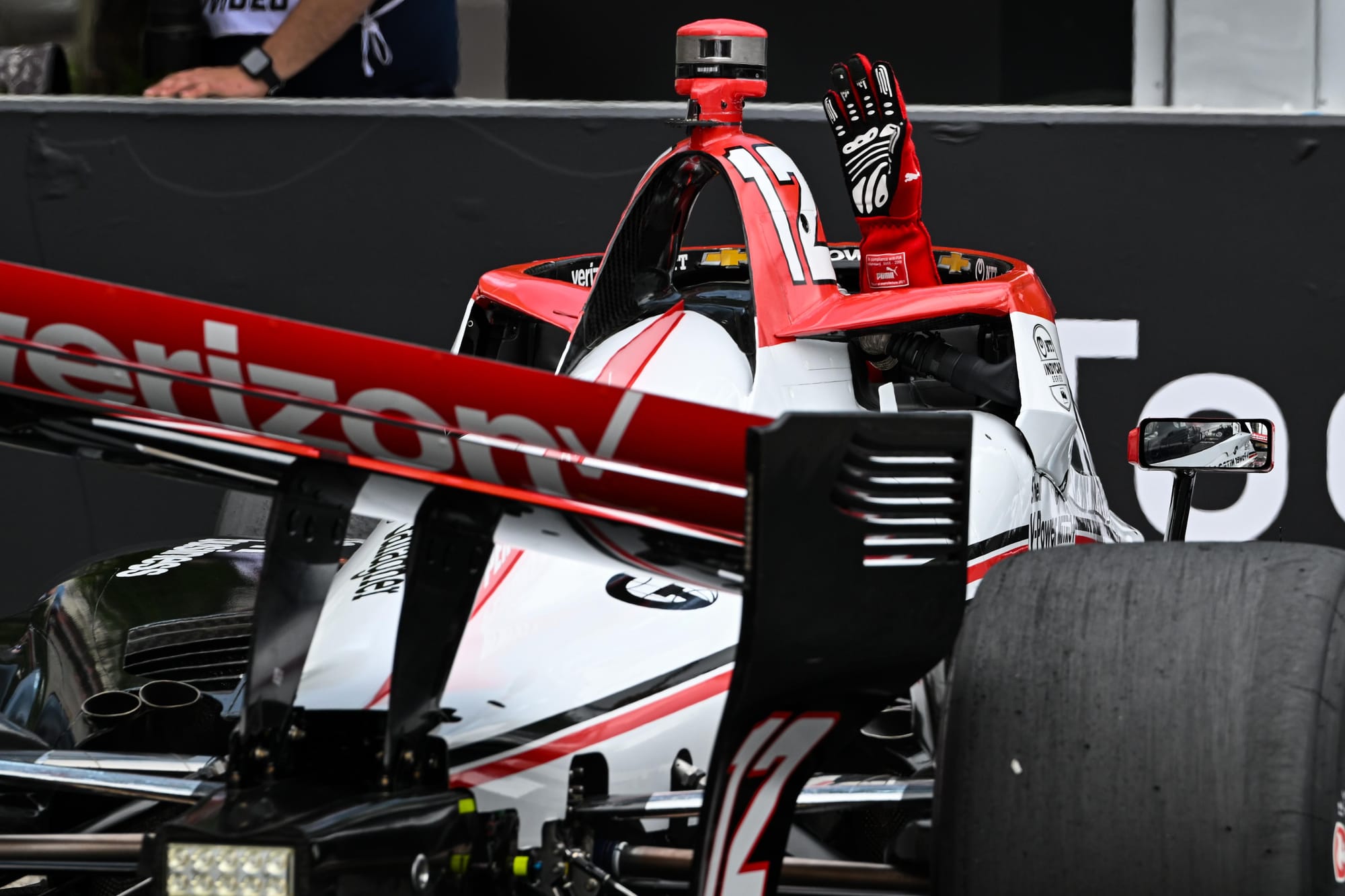
As much as we praise IndyCar drivers for their ability and feats, it’s fine to question them in races like this, too.
As for the stewards, there’s plenty of races I think they’ve performed poorly at and there’s far too much generally letting contact go or allowing drivers to make overtakes to shunt the other car off in the process. But they’ve set a precedent for that and, in this race, they did dish out hefty penalties to drivers involved in incidents. It just didn’t matter because of the number of cautions and the short pitlane.
It's worth considering if one race per year like this is a good thing or not. It's not what most fans would call pure racing, but the unpredictability is certainly very appealing to a neutral tuning-in hoping not to see the same driver win every week.
Only, IndyCar already does a pretty good job of providing that anyway.


